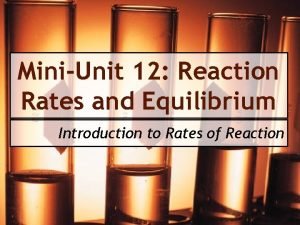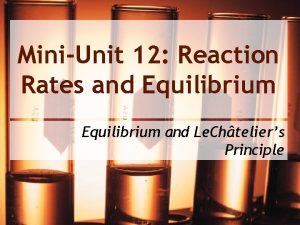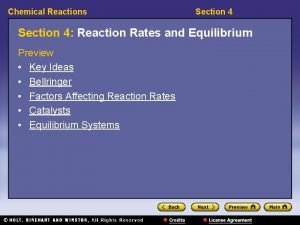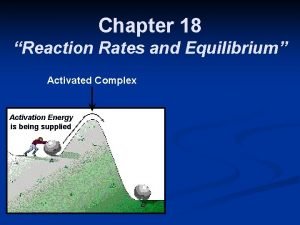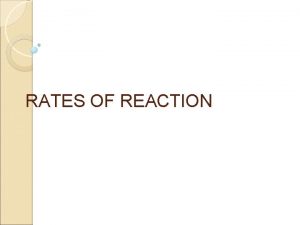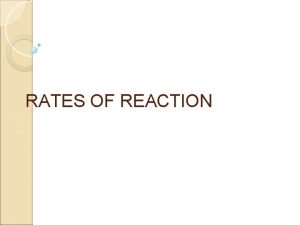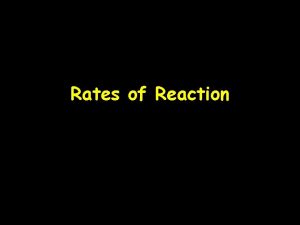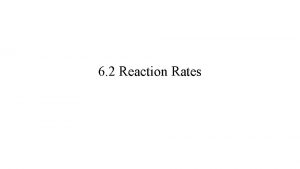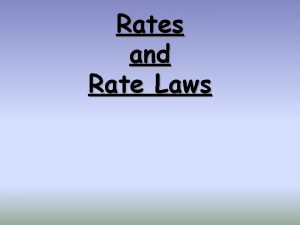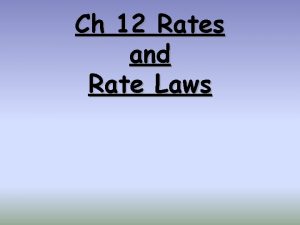Reaction Rates Reaction Rate Activity 1 2 3









- Slides: 9

Reaction Rates

Reaction Rate Activity 1. 2. 3. 4. H 2 O 2 + Yeast ? Create a before and after table on a piece of paper to record your observations. Pour about 10 m. L of hydrogen peroxide into a small beaker and observe. Add a small spatula of yeast to the hydrogen peroxide. Stir gently with a stirrer and observe. Light a wood splint and test for the presence of oxygen.

• Into what two products does the hydrogen peroxide decompose? • O 2 and H 2 O • Why weren’t bubbles produced in step 2? • What is the function of the yeast? • The yeast acts as a catalyst which speeds up the chemical reaction.

Rates of Reaction • The rate of a chemical reaction is the speed with which reactants are converted to products. • Change in concentration over time. Rate = ∆M ∆t

Comparison to miles/hour

Collision Theory is used to explain why chemical reactions occur at different rates. 1. Particles need to collide to react. *More collisions = faster reaction

2. The higher the concentration of particles, the faster the reaction. *Due to increased collisions.

3. Particles must collide with sufficient energy to break any bonds in the reactant particles. *The activation energy is the minimum amount of energy the colliding reactant particles must have in order for products to form.

4. Particles must hit at the right orientation. Ineffective Collision Effective Collision
 Is a ratio a rate
Is a ratio a rate Equivalent ratios definition
Equivalent ratios definition Ratios rates and unit rates
Ratios rates and unit rates Ratios rates and unit rates
Ratios rates and unit rates Rate of reaction formula
Rate of reaction formula Mini unit reaction rates and equilibrium
Mini unit reaction rates and equilibrium Mini unit reaction rates and equilibrium
Mini unit reaction rates and equilibrium Chapter 18 review chemical equilibrium section 3 answer key
Chapter 18 review chemical equilibrium section 3 answer key Section 4 reaction rates and equilibrium
Section 4 reaction rates and equilibrium Chapter 18 reaction rates and equilibrium answer key
Chapter 18 reaction rates and equilibrium answer key





